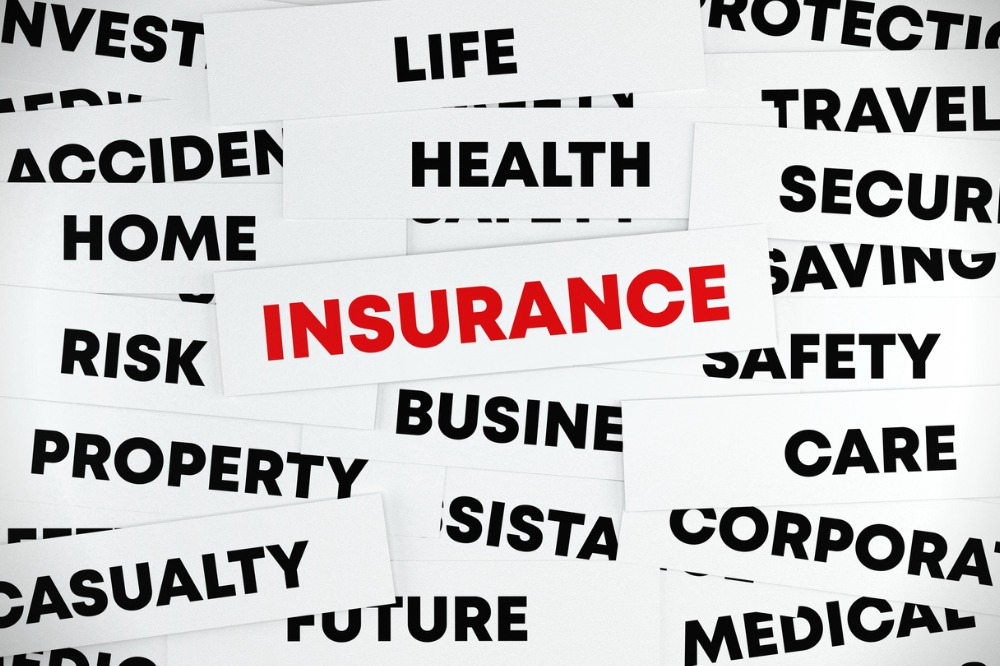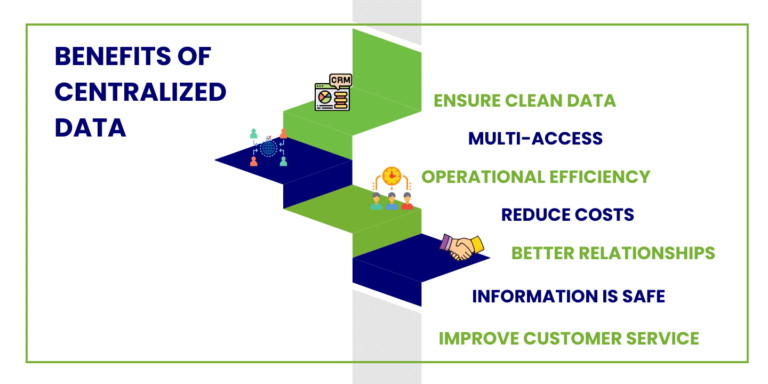U.S. Property and Casualty Insurance: 2024 Insights
The U.S. property and casualty insurance sector is currently navigating a dynamic landscape marked by significant economic and underwriting developments. Recent insights from the Triple-I forecasting report reveal that the industry has achieved a notable net combined ratio of 99.4, reflecting a year-over-year improvement that underscores the ongoing trends within the insurance market. With commercial lines leading the charge in profitability, the evolving performance gap between commercial and personal lines continues to attract attention amidst rising catastrophe losses from natural disasters. These trends not only highlight the importance of underwriting profitability but also signal potential shifts in insurance industry trends that could affect future policies. As we delve deeper into the impact of these factors, the upcoming risk management conference in Miami promises to shed light on strategic solutions for navigating this new age of risk.
In the realm of insurance, the property and casualty domain represents a crucial segment that encompasses various coverage types, including auto, homeowners, and commercial insurance. This sector is characterized by its response to diverse market dynamics, such as underwriting challenges and increasing claims from catastrophic events. The latest reports indicate that while commercial coverage remains stable, personal insurance lines are experiencing significant growth, reflecting broader shifts in consumer needs and economic conditions. As the industry grapples with the implications of catastrophe losses and evolving underwriting practices, understanding these trends is essential for stakeholders aiming to adapt to the changing landscape. With a focus on profitability and risk management, the discourse surrounding P&C insurance continues to evolve, emphasizing the need for strategic foresight.
Current Trends in the U.S. Property and Casualty Insurance Industry
The U.S. property and casualty insurance industry is currently experiencing a robust recovery, as highlighted by the latest forecasting report from Triple-I and Milliman. The first half of 2024 has brought better-than-expected economic and underwriting results, with an estimated net combined ratio of 99.4, marking a significant 2.3-point improvement year-over-year. This positive trend can largely be attributed to the growth in net premiums written, particularly in personal lines, which contrasts with the relatively stable performance of commercial lines. The ongoing enhancements in underwriting profitability suggest that insurers are better equipped to handle the challenges posed by catastrophe losses and inflationary pressures on losses, which have been significant factors in the insurance industry’s dynamics.
Moreover, the performance gap between personal and commercial lines is narrowing, indicating a shift in market conditions. Despite personal lines outperforming commercial counterparts, both segments show signs of resilience. Insurers are focusing on strategic adjustments to adapt to changing risk landscapes, particularly in light of recent natural disasters like Hurricanes Helene and Milton. The industry’s ability to maintain profitability amid these challenges reflects a deeper understanding of underwriting strategies and risk management, ensuring that the U.S. property and casualty insurance sector remains competitive and responsive to market demands.
Understanding Underwriting Profitability in Insurance
Underwriting profitability is a critical measure for insurance companies, determining their financial health and operational efficiency. In the context of the U.S. property and casualty insurance market, a combined ratio below 100 signifies profitability, while a ratio above indicates losses. The Triple-I forecast reveals that the net combined ratio for homeowners insurance improved significantly to 104.9 in the first half of 2024, suggesting a trajectory toward profitability by 2026. This improvement is pivotal as it signals the effectiveness of rate increases implemented to combat inflationary pressures on losses, particularly in personal auto and homeowners insurance sectors.
In commercial lines, the situation is more complex, with the net combined ratio remaining stable at 97.1 percent. While improvements in commercial property and workers’ compensation have been noted, ongoing deterioration in commercial auto and general liability presents challenges. As the industry grapples with these variances, the insights from industry experts underscore the importance of strategic underwriting practices that can mitigate risks associated with catastrophe losses and ensure long-term profitability. The ability to adapt to changing economic conditions, including inflation and loss trends, is key to maintaining a healthy underwriting balance in the property and casualty insurance landscape.
Impact of Catastrophe Losses on Insurance Forecasts
Catastrophe losses pose a significant risk to the U.S. property and casualty insurance industry, profoundly impacting underwriting profitability and overall financial forecasts. As cited in the Triple-I report, each additional billion dollars in catastrophe losses can translate to a 0.1 percent impact on the net combined ratio forecast. This correlation emphasizes the need for insurers to incorporate robust risk management strategies to account for unpredictable natural disasters, which have been on the rise due to climate change and other factors. Insurers are increasingly relying on historical data and trend analysis to forecast potential losses and adjust their strategies accordingly.
Furthermore, the anticipated catastrophe losses for the latter half of 2024 are a focal point for industry analysts. With projections suggesting a need for an additional $30 billion to $40 billion in losses, the implications for the net combined ratio could be significant, potentially resulting in a +3.0-point impact on profitability forecasts. This scenario underscores the importance of proactive measures in underwriting and pricing strategies that account for these risks. By staying ahead of potential catastrophe impacts through careful forecasting, the property and casualty insurance industry can better protect its financial health and ensure sustainable growth.
Commercial vs. Personal Lines: A Comparative Analysis
The U.S. insurance market exhibits distinct differences between commercial and personal lines, particularly in terms of underwriting profitability and growth potential. Recent data indicates that while commercial lines have maintained stability in their combined ratio, personal lines have shown significant improvements due to strategic rate increases. The ongoing performance gap, driven primarily by differing market dynamics and risk exposures, remains a critical area of analysis for insurers. For instance, personal auto insurance has displayed a remarkable net written premium growth rate of 14.5 percent in 2024, the highest in over 15 years, showcasing the resilience and adaptability of this segment.
In contrast, the commercial lines sector faces challenges, particularly with expectations of worsening conditions in commercial auto, which is anticipated to remain unprofitable until at least 2026. The deterioration in general liability adds to the complexity of managing profitability in commercial lines. Insurers must navigate these challenges by utilizing advanced underwriting techniques and leveraging data analytics to make informed decisions. Understanding the nuances between commercial and personal lines allows insurers to tailor their approaches effectively, ensuring that they can capitalize on growth opportunities while mitigating risks associated with underwriting losses.
The Influence of Economic Trends on Insurance Performance
Economic trends play a crucial role in shaping the performance of the U.S. property and casualty insurance industry. The recent forecasting report by Triple-I and Milliman highlights how economic recovery, coupled with strategic underwriting practices, has led to improved profitability in the first half of 2024. As the economy bounces back, insurers are witnessing an uptick in net premiums written, particularly in personal lines, which is indicative of consumer confidence and increased demand for coverage. This economic momentum provides a favorable environment for insurers to implement necessary rate adjustments that directly impact their underwriting profitability.
However, economic challenges, such as rising inflation and the increasing cost of claims, continue to pose risks to the insurance landscape. Insurers must remain vigilant and proactive in their strategies to cope with these changes. The insights from industry experts underscore the necessity of aligning underwriting practices with current economic conditions to sustain profitability. As economic indicators fluctuate, the ability of insurers to adapt their strategies accordingly will determine their success in navigating the evolving insurance landscape.
Forecasting the Future: Insights from Triple-I
The Triple-I forecasting report serves as a valuable resource for understanding the future trajectory of the U.S. property and casualty insurance industry. Released during a members-only webinar, the report provides insights into key performance metrics, including the estimated net combined ratio and the expected growth rates for various insurance lines. With a focus on both personal and commercial lines, the report highlights the ongoing performance gap and the importance of strategic rate increases to maintain profitability amid inflationary pressures and catastrophe risks. This forward-looking perspective equips industry stakeholders with the knowledge necessary to make informed decisions.
Moreover, the report emphasizes the significance of data-driven analysis in forecasting potential catastrophe losses and their impact on the net combined ratio. By leveraging historical data and economic trends, insurers can better prepare for future uncertainties and align their underwriting strategies with market demands. The insights shared by industry leaders during the webinar reinforce the need for a proactive approach to risk management, ensuring that the property and casualty insurance industry remains resilient and capable of adapting to the evolving landscape of risks and opportunities.
The Role of Technology in Modern Insurance Underwriting
In recent years, technology has emerged as a transformative force in the property and casualty insurance industry, significantly influencing underwriting practices. Insurers are increasingly adopting advanced analytics, artificial intelligence, and machine learning to enhance their risk assessment capabilities. These technological advancements enable insurers to analyze vast amounts of data, identify trends, and make more informed underwriting decisions. By integrating technology into their processes, insurers can improve their combined ratios and overall profitability, particularly in personal lines where competition is fierce and consumer expectations are high.
Furthermore, technology plays a crucial role in streamlining claims processing and enhancing customer experience. Insurers leveraging digital tools can respond more swiftly to claims, thereby improving customer satisfaction and retention rates. As the industry evolves, embracing technological innovations will be essential for insurers to maintain their competitive edge. The ability to harness technology effectively will not only enhance underwriting profitability but also position insurers favorably in a rapidly changing market, ensuring they are equipped to manage emerging risks and capitalize on new opportunities.
Navigating Regulatory Changes in the Insurance Industry
Regulatory changes continue to shape the landscape of the U.S. property and casualty insurance industry, influencing everything from underwriting practices to claims management. Insurers must stay informed about evolving regulations that impact their operations and profitability. The latest Triple-I forecasting report highlights the importance of compliance and adaptation as insurers navigate the complexities of regulatory frameworks. Adhering to regulations not only ensures operational integrity but also fosters consumer trust, which is critical in maintaining a strong market presence.
Moreover, proactive engagement with regulatory bodies allows insurers to voice their concerns and influence policy decisions that affect the industry. As regulatory environments become more stringent, insurers must focus on developing robust compliance strategies that align with their business objectives. This approach will not only mitigate risks associated with regulatory non-compliance but also position insurers to respond effectively to future changes. By embracing a culture of compliance and adaptability, the property and casualty insurance industry can ensure sustainable growth and resilience in an increasingly complex environment.
The Importance of Risk Management in Insurance
Effective risk management is at the heart of the U.S. property and casualty insurance industry, determining the success of underwriting strategies and overall profitability. As highlighted in the Triple-I report, insurers must remain vigilant in assessing risks associated with natural disasters, economic fluctuations, and changing consumer behaviors. By implementing comprehensive risk management frameworks, insurers can better anticipate potential losses and adjust their underwriting practices accordingly. This proactive approach is particularly crucial in light of the increasing frequency and severity of catastrophe losses, which pose a significant threat to underwriting profitability.
Furthermore, the integration of advanced data analytics into risk management processes allows insurers to identify emerging trends and make informed decisions. By leveraging historical data and predictive modeling, insurers can enhance their ability to forecast potential losses and align their pricing strategies with current market conditions. This alignment is essential for maintaining a competitive edge in the property and casualty insurance landscape, ensuring that insurers can effectively manage risks while capitalizing on growth opportunities. As the industry continues to evolve, the importance of robust risk management practices will only increase, underscoring the need for continual investment in innovative solutions.
Frequently Asked Questions
What are the current trends in the U.S. property and casualty insurance industry?
The U.S. property and casualty insurance industry is experiencing better-than-expected economic and underwriting results, as highlighted in the latest Triple-I forecasting report. The estimated net combined ratio of 99.4 indicates a year-over-year improvement, with commercial lines outperforming personal lines. The industry has seen significant rate increases to counter inflationary pressures, particularly in personal auto and homeowners insurance.
How do catastrophe losses affect underwriting profitability in U.S. property and casualty insurance?
Catastrophe losses significantly impact underwriting profitability in the U.S. property and casualty insurance sector. For instance, each additional billion dollars in catastrophe losses can lead to a 0.1 percent decrease in the net combined ratio forecast. Therefore, substantial catastrophe events, like Hurricanes Helene and Milton, introduce considerable uncertainty and can diminish the overall profitability of insurance lines.
What is the performance gap between commercial and personal lines in U.S. property and casualty insurance?
Currently, there exists a performance gap between commercial and personal lines in the U.S. property and casualty insurance industry. While commercial lines have maintained stable underwriting profitability, personal lines are experiencing growth in net premiums written. However, the gap is narrowing, as personal auto and homeowners insurance are showing improved results due to necessary rate increases.
What are the implications of the Triple-I 2024 net combined ratio forecast on the U.S. property and casualty insurance market?
The Triple-I 2024 net combined ratio forecast indicates a potential impact from catastrophe losses. An estimated additional $30 billion in losses could raise the combined ratio forecast by 3.0 points, which emphasizes the sensitivity of underwriting profitability to catastrophic events. This forecast is critical for assessing the financial health of the U.S. property and casualty insurance market.
How is underwriting profitability measured in U.S. property and casualty insurance?
Underwriting profitability in U.S. property and casualty insurance is measured using the combined ratio, which is the ratio of total expenses to total earned premiums. A combined ratio below 100 indicates profitability, while a ratio above 100 signifies a loss. The latest industry reports show a combined ratio improvement, particularly in personal lines, signaling enhanced profitability.
What are the expected growth rates for personal and commercial lines in the U.S. property and casualty insurance market?
In the U.S. property and casualty insurance market, personal lines are expected to see a net written premium growth rate of 14.5 percent in 2024, the highest in over 15 years. Conversely, commercial lines are projected to remain relatively flat, as ongoing challenges in segments like commercial auto and general liability may hinder growth.
How does inflation impact replacement costs in U.S. property and casualty insurance?
Inflation is expected to affect replacement costs in U.S. property and casualty insurance significantly. According to forecasts, replacement costs are projected to outpace general inflation by 2025, which could pose challenges for insurance carriers that enjoyed lower replacement cost increases during previous quarters.
What is the importance of the Triple-I Joint Industry Forum for U.S. property and casualty insurance professionals?
The Triple-I Joint Industry Forum is a crucial event for U.S. property and casualty insurance professionals, as it addresses emerging risks and trends in the insurance landscape. Attendees can gain valuable insights and strategies to navigate the evolving market, making it an essential gathering for industry stakeholders.
| Key Point | Details |
|---|---|
| Economic Performance | The U.S. property and casualty insurance industry reported better-than-expected economic results in H1 2024 with an estimated net combined ratio of 99.4. |
| Underwriting Profitability | A combined ratio below 100 indicates profitability. The commercial lines continue to outperform personal lines. |
| Impact of Catastrophes | Hurricanes Helene and Milton pose a threat to homeowners’ insurance results, contributing to market uncertainty. |
| Personal Auto Insurance | Net combined ratio improved to 100, with a projected net written premium growth rate of 14.5% for 2024, the highest in over 15 years. |
| Commercial Lines | The net combined ratio for commercial lines was 97.1%, with expectations of unprofitability in commercial auto and general liability until at least 2026. |
| Future Projections | Property and casualty replacement costs are expected to surpass general inflation in 2025. |
| Upcoming Events | Triple-I’s Joint Industry Forum is scheduled for November 19 and 20 in Miami. |
Summary
The U.S. property and casualty insurance sector has exhibited significant improvements in its economic and underwriting performance in the first half of 2024. Despite challenges posed by natural catastrophes, the industry is on track for continued growth, particularly in personal auto and homeowners insurance, which are expected to achieve profitability by 2026. With rising replacement costs projected to outpace general inflation in 2025, the landscape for property and casualty insurers is evolving, necessitating strategic responses to maintain profitability. Stakeholders should remain informed about these developments and participate in upcoming industry forums to discuss solutions for the future.







